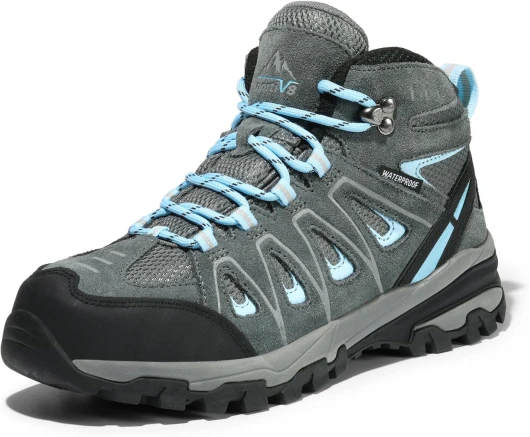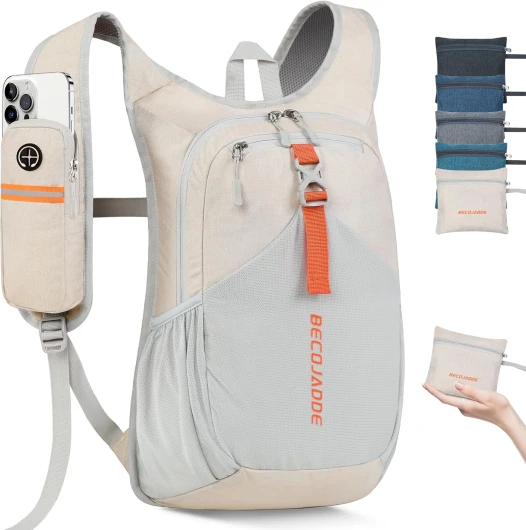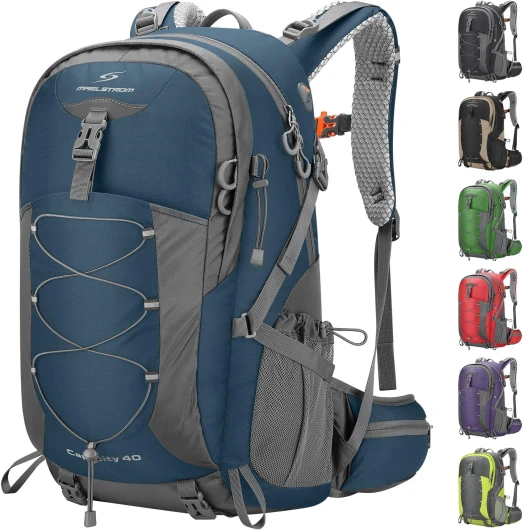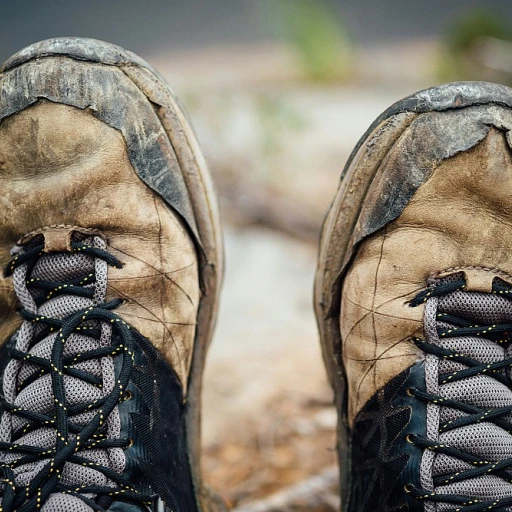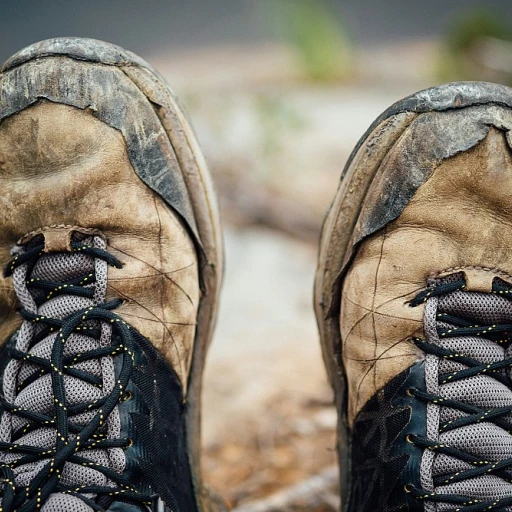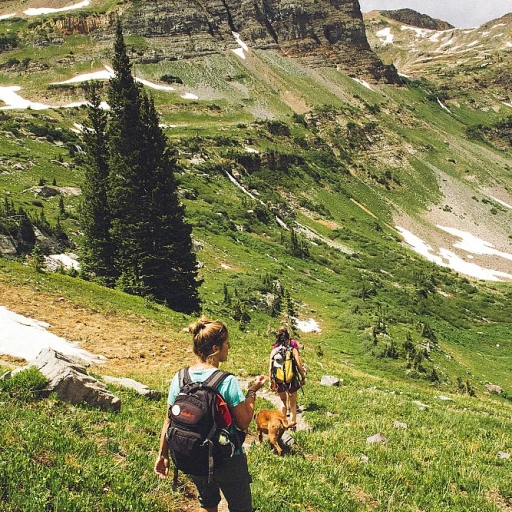
Understanding the Terrain of Huckleberry Point Trail
Understanding the Terrain
The Huckleberry Point Trail is a gem nestled within the Catskill Park, offering hikers breathtaking vistas of the surrounding Catskills. This trail combines elements of both rugged and serene landscapes. As you embark on this journey, you'll traverse the renowned Platte Clove, admired for its dramatic scenery and historic significance. The trail itself is moderately difficult, making it an excellent choice for intermediate hikers looking to engage with nature's challenges while exploring the beauty of the region.
The terrain varies from rocky outcrops and gentle inclines to denser forested paths that offer a mix of shade and exposure to sunlight. These variations require thoughtful consideration when it comes to preparing and equipping yourself appropriately for the hike. Navigating the steeper sections and uneven surfaces demands a quality pair of hiking boots to provide necessary support and traction.
Parking convenience is another essential aspect to consider. The parking lot at Platte Clove, located near the trailhead, provides easy accessibility. This proximity means you can quickly transition from your car into the heart of nature without significant inconvenience. Early arrival is advisable, especially during peak seasons, to secure a spot.
Given its location in the lush expanse of the Kaaterskill Wild Forest, Huckleberry Point Trail is marked by sweeping panoramas of the surrounding high peaks such as Indian Head and Twin Mountain. The vistas from the point are among the best you’ll encounter, capturing the rugged charm of the Devil's Path and beyond.
To make the most of your hike, consider bringing a trail map for navigation. Routes can be altered and knowing your way across the trail is crucial to a fulfilling experience, especially if recent trail map updates have led to modifications in access paths or the addition of new features.
Choosing the Right Hiking Boots for Varied Terrains
Finding the Perfect Pair for Huckleberry Point
When embarking on the Huckleberry Point Trail, the right pair of hiking boots can make all the difference. This trail, nestled in the heart of the Catskill Park, offers a mix of terrains that demand versatility from your footwear. From the rocky paths of the Devil Path to the gentle slopes near Platte Clove, each section of the trail presents unique challenges.
Consider the Terrain
The Huckleberry Point Trail is known for its varied landscape. As you navigate through the Kaaterskill Wild Forest, you'll encounter everything from muddy patches to rocky outcrops. A boot with a sturdy sole and good traction is essential to handle these conditions. Look for boots with deep lugs that can grip the trail map's unpredictable surfaces, ensuring stability on both wet and dry paths.
Weather and Climate Adaptability
Weather in the Catskills can be unpredictable. A sunny morning can quickly turn into a rainy afternoon. Waterproof boots are a must-have for this trail, especially when crossing streams or hiking after a recent rain. Breathable materials will also help keep your feet dry and comfortable, preventing blisters during long hikes.
Support and Protection
Given the trail's proximity to high peaks like Indian Head and Twin Mountain, ankle support is crucial. Boots with high collars provide the necessary support to prevent injuries on uneven terrain. Additionally, reinforced toe caps can protect your feet from unexpected obstacles like roots and rocks that are common along the route.
For those planning to explore the beauty of Huckleberry Point Trail, choosing the right hiking boots is a step towards a successful adventure. To learn more about navigating permits and planning your hike, check out this guide on navigating the Angels Landing permit process.
Material Matters: What to Look for in Hiking Boots
Key Material Considerations for Hiking Boots
When embarking on the diverse terrain of the Huckleberry Point Trail, a thoughtful choice of material in your hiking boots is critical to ensure durability and comfort throughout your journey. Whether you are traversing the rugged paths of the Catskills or encountering wet patches in the Kaaterskill Wild Forest, selecting the right materials can significantly impact your hiking experience. Firstly, the outer material of hiking boots should be able to withstand the constantly changing conditions that trails like the Platte Clove Road or Indian Head offer. Materials such as full-grain leather provide excellent durability and water resistance, essential when hiking the varied surfaces of the Huckleberry or Kaaterskill high peak areas. On the other hand, synthetic materials like nylon and polyester, though less durable over time, offer reduced weight and improved breathability, making longer hikes more manageable. Inside the boot, the importance of a breathable, moisture-wicking liner cannot be overstated. This element works tirelessly to keep your feet dry and comfortable as you navigate the changing climates along the Devil Path or Twin Mountain sections. Materials like Gore-Tex provide waterproofing while allowing your skin to breathe, an essential feature especially when your hike includes water crossings or muddy segments. Finally, the sole material plays a pivotal role in maintaining grip and stability on all types of surfaces. Durable rubber soles are a must-have for the rocky and often slippery routes like the Huckleberry Point and the steep ascents found in the Catskill Park or along the Steenburg Road. The paramount choice of sole material ensures that every step counts, keeping you secure on the trail map of your adventure. Selecting the right hiking boots with suitable materials is a crucial step for any hiker aiming to enjoy the beauty of Huckleberry Point Trail. For more detailed guidance on choosing the ultimate backpacking sleeping pad to complement your hikes, check out this helpful resource on selecting the ultimate outdoor gear.Fit and Comfort: Key Considerations for Long Hikes
Prioritizing Fit and Comfort for Huckleberry Adventures
Embarking on a hike along Huckleberry Point Trail or any trails around the Catskill Park demands well-chosen hiking boots. The route has unpredictable terrains, from the contours of Platte Clove to the rocky stretches of the Devil's Path. Hence, ensuring your boots provide a snug fit is essential for an experience free from discomfort and potential injuries. One factor to consider is the length and width of the hiking boots. Your boots should give you enough space to wiggle your toes—a critical element when descending the high peaks within the Kaaterskill Wild Forest. At the same time, your heel should remain secure to avoid painful blisters and slips. During long hikes, feet might swell, especially on warmer days or more challenging trails like those at Indian Head or Twin Mountain. It’s advisable to leave a half-inch gap between your longest toe and the end of the boot when trying them on. Pay attention to the boot’s arch support. The Catskill mountain paths, including Huckleberry's rocky routes and steep sections, counter various pressures on your arches. Well-cushioned insoles can protect foot health against the varied terrains on the point trail and beyond. Finally, a flexible but sturdy ankle support is crucial. On the Huckleberry Point Trail, filled with uneven surfaces and sometimes loose gravel, ankle protection is indispensable. A boot that hugs your ankle while allowing for some mobility strikes the right balance for such dynamic terrains. In any journey through these breathtaking but demanding environments, prioritizing the fit and comfort of your hiking boots will keep painful setbacks at bay, allowing you to soak in the scenic views and rugged beauty of paths walked by many adventurous souls years ago.Maintenance Tips for Hiking Boots
Preserving Your Investment: Essential Care for Hiking Boots
Hiking boots are a crucial component of any successful trek, especially when navigating the diverse terrains of the Huckleberry Point Trail. Proper maintenance not only extends the life of your boots but also ensures they perform optimally on every hike. Here are some key tips to keep your boots in top condition:
- Regular Cleaning: After each hike, especially on trails like the Huckleberry Point or the rugged paths of the Catskill Park, remove dirt and debris. Use a soft brush to gently scrub away mud and grime, paying special attention to the seams and crevices.
- Drying Techniques: Never dry your boots using direct heat sources like a fireplace or radiator. Instead, remove the insoles and let them air dry naturally. Stuffing them with newspaper can help absorb moisture, especially after a wet hike through the Kaaterskill Wild Forest.
- Waterproofing: Depending on the material of your boots, apply a suitable waterproofing treatment. This is particularly important if you frequently hike in areas with unpredictable weather, such as the Platte Clove or the Indian Head region.
- Inspect and Repair: Regularly check for signs of wear and tear. Address minor issues like loose stitching or worn-out laces promptly to prevent them from becoming major problems on your next adventure along the Devil Path or Twin Mountain.
- Proper Storage: Store your boots in a cool, dry place away from direct sunlight. Avoid leaving them in a damp garage or a hot car, as extreme temperatures can damage the materials.
By following these maintenance tips, your hiking boots will remain reliable companions on the trails, whether you're exploring the scenic routes of the Catskills or the challenging paths of the Kaaterskill High Peak. Remember, well-maintained boots contribute significantly to the comfort and safety of your hiking experience.


